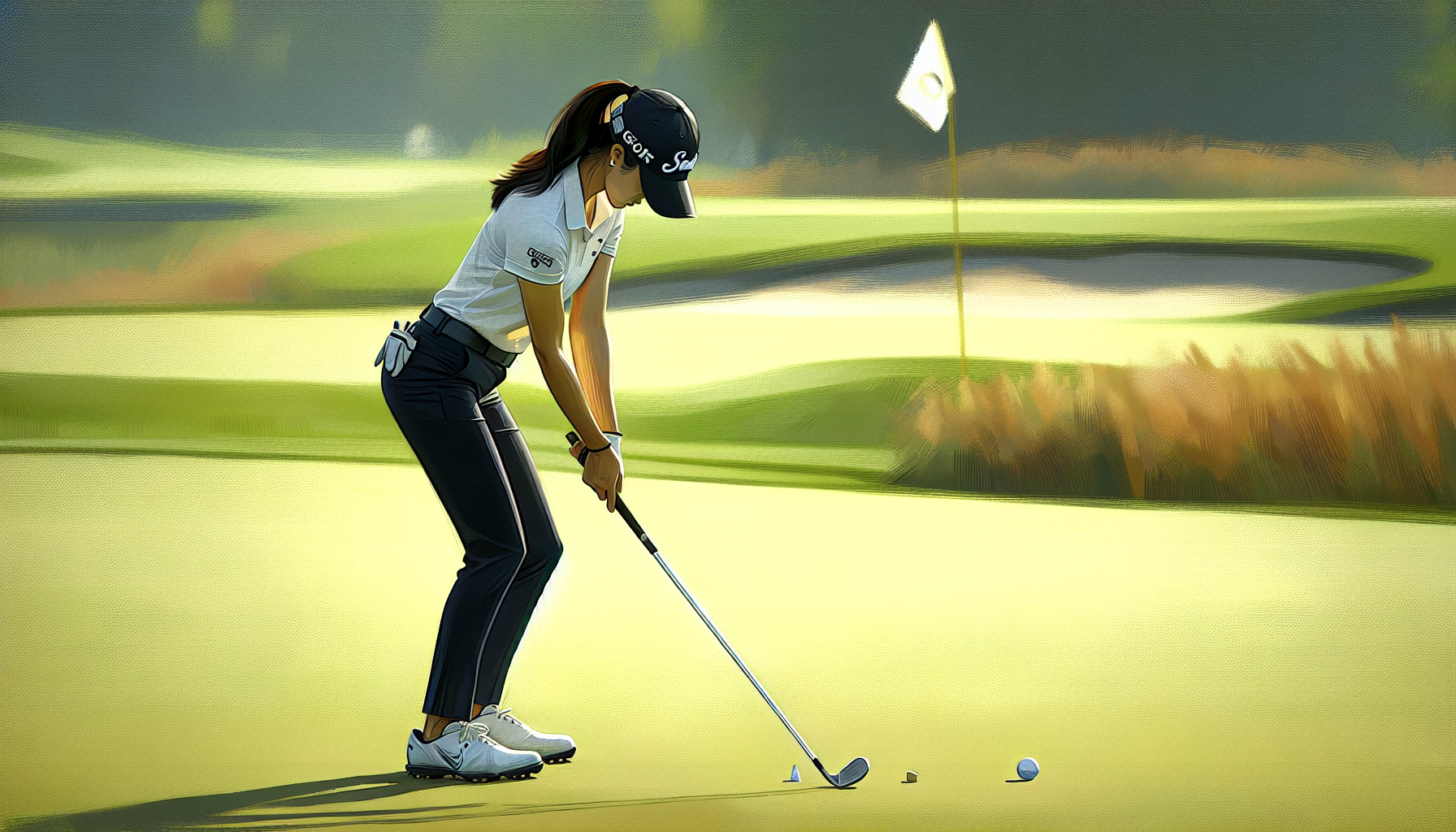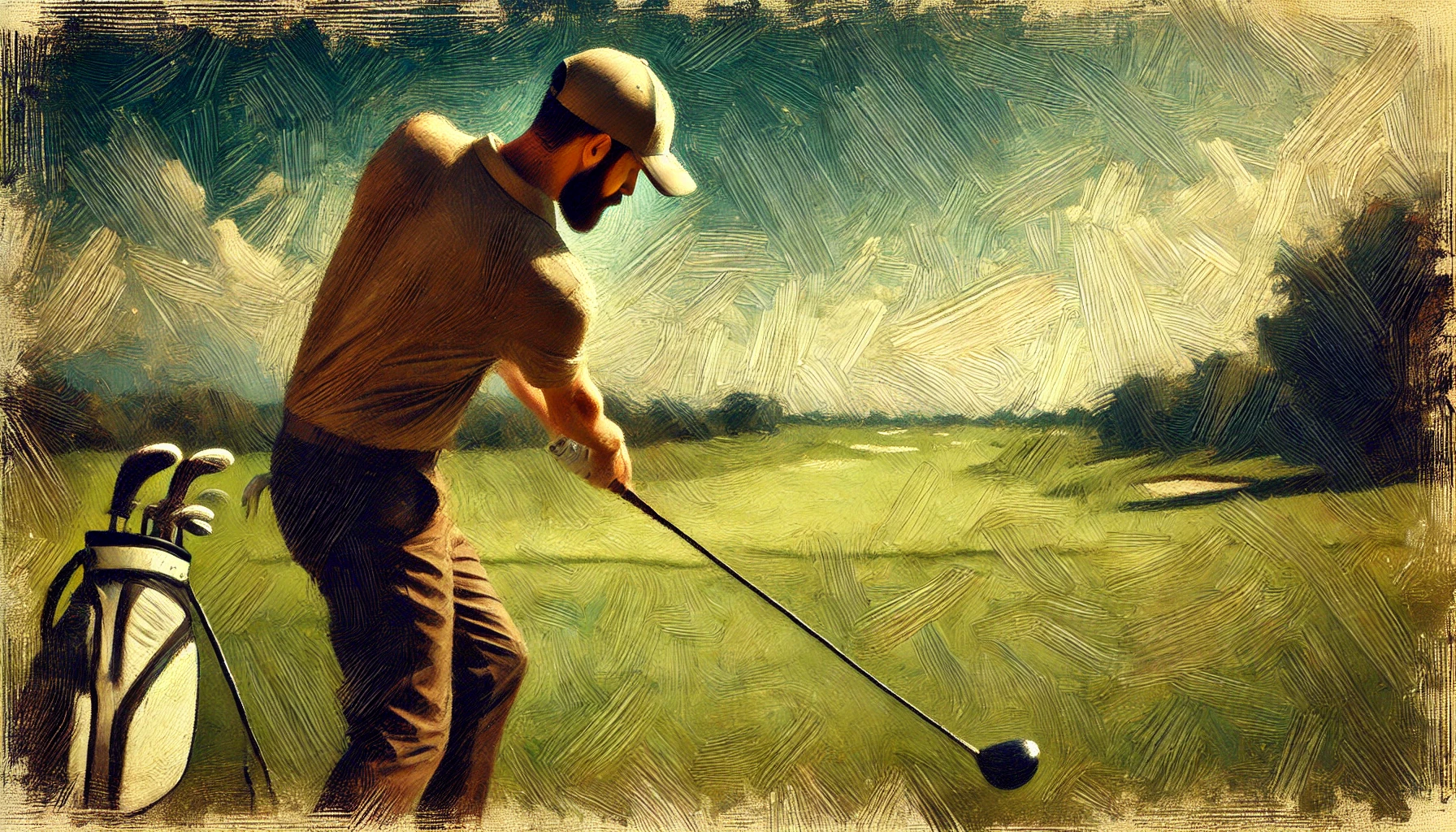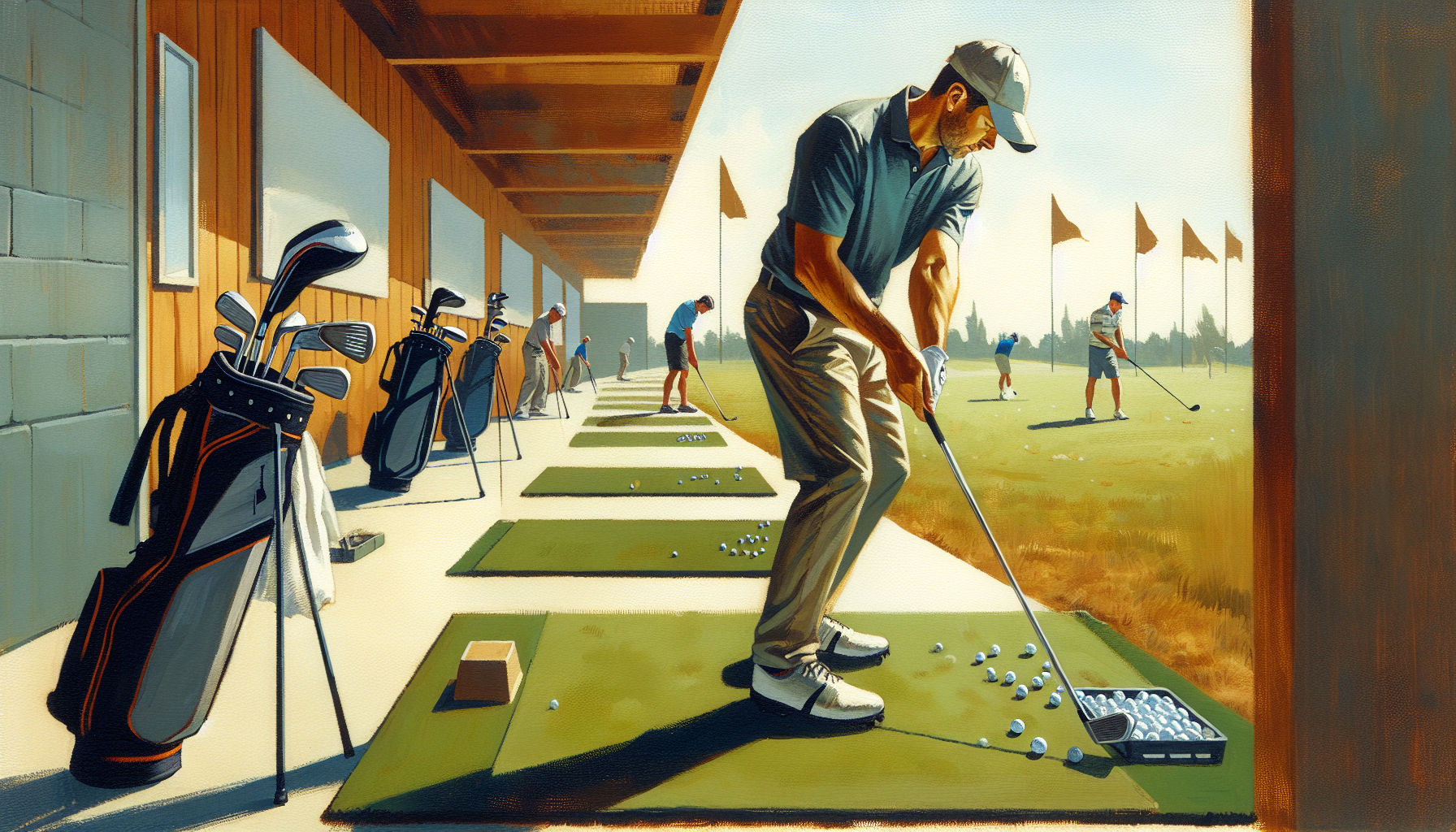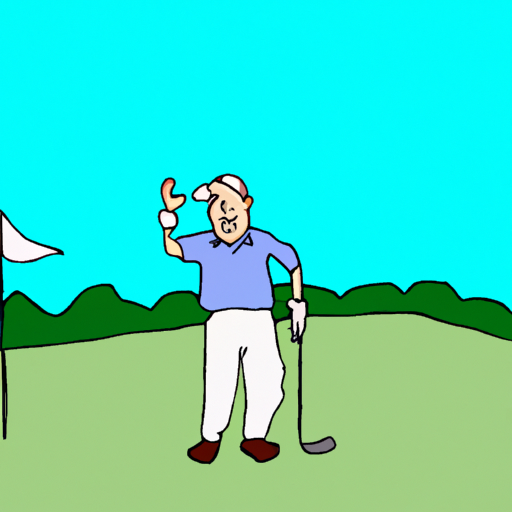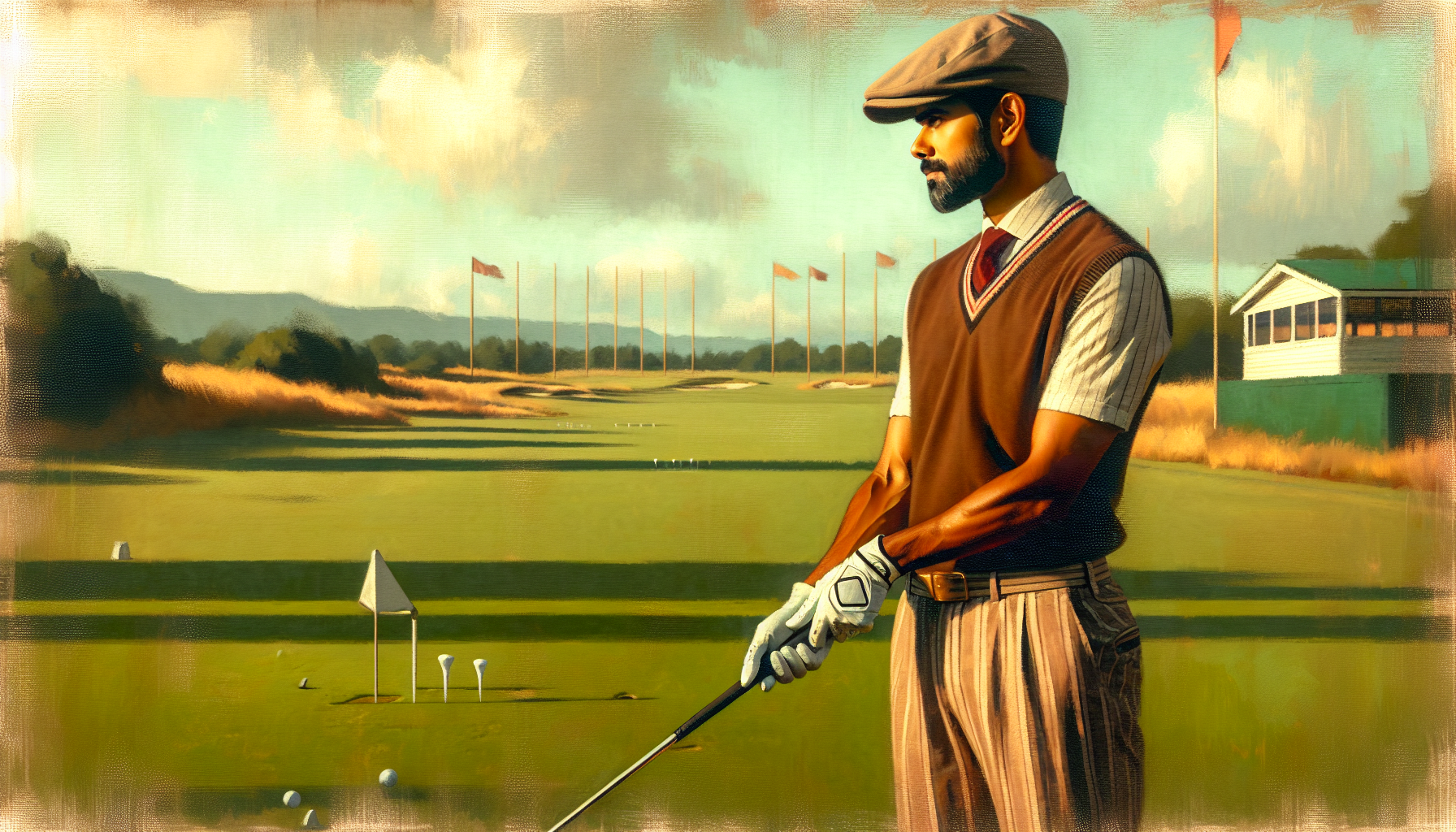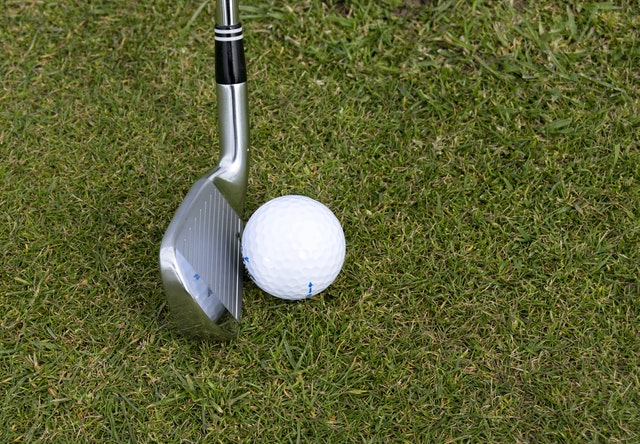How to Swing a Golf Driver for Maximum Distance and Accuracy
Have you ever felt the frustration of seeing your golf ball veer off course, despite your best efforts? Learning how to swing a golf driver effectively is a game-changer. In this guide, we’ll break down the key elements of a powerful and accurate driver swing, from the correct tee height and stance to the nuances of spine tilt and swing mechanics. Discover practical tips, personal anecdotes, and advice to help you hit longer, straighter drives. Don’t miss our FAQ section at the end for quick answers to common questions!
Golfing has always been more than just a sport for me; it's a journey of constant learning and improvement. I remember one particular weekend when my buddies and I were out on the course. Despite having the latest gear and the most sophisticated gadgets, my drives just wouldn't go the distance. It was frustrating, to say the least. That's when I decided to dig deep and truly master the art of swinging a golf driver.
Mastering the driver swing is crucial not only because it sets the tone for each hole but also because a well-executed drive can significantly lower your score and boost your confidence. In this article, I'll share with you the secrets I've learned, backed by practical tips and advice, to help you nail your driver swing. Whether you're a beginner or looking to refine your technique, this guide will walk you through each step with a personal touch and professional insights.
Stay with me, and let's transform your game one swing at a time.
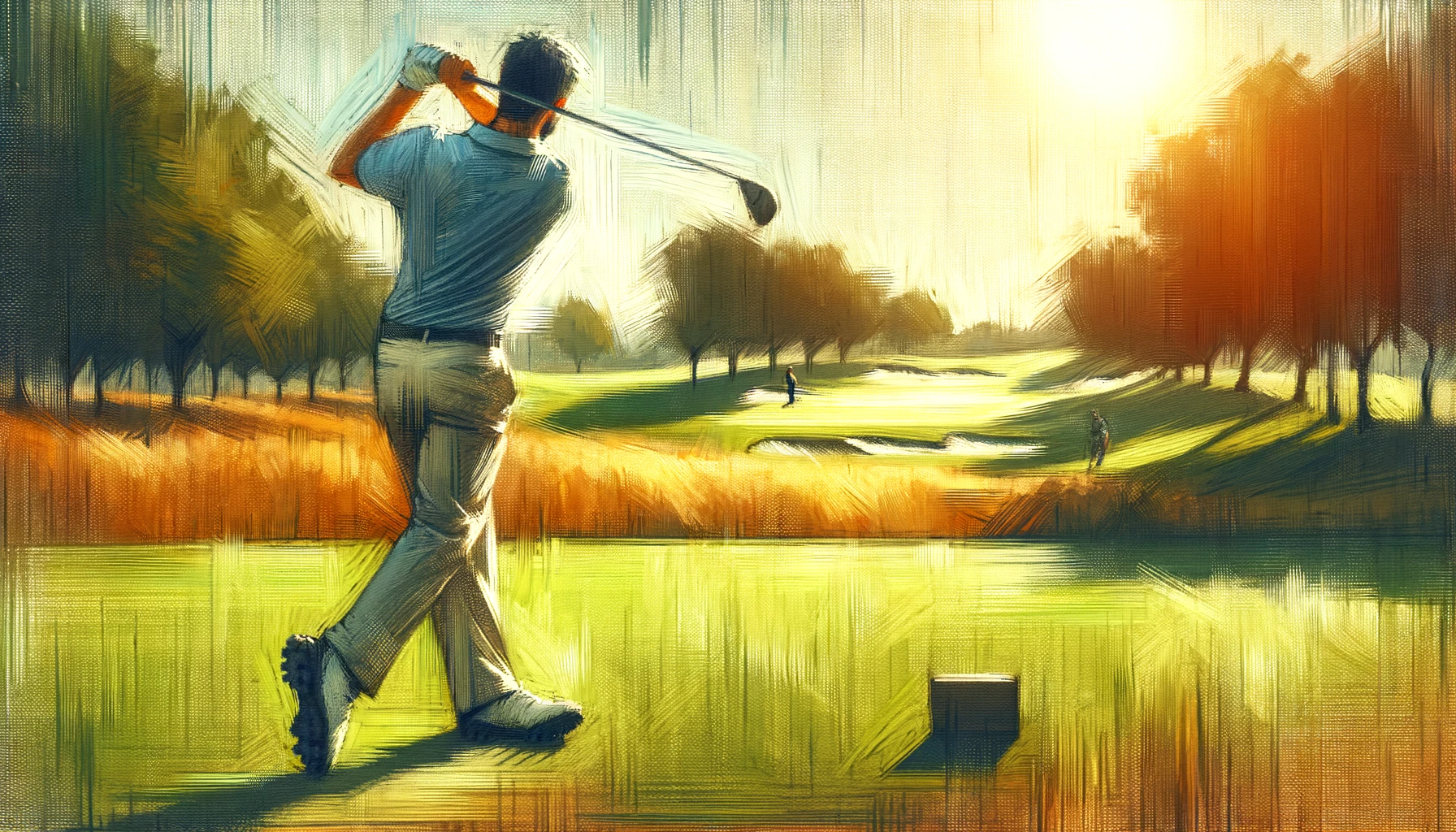 Perfect your swing with these tips.
Perfect your swing with these tips.How I Mastered the Art of Swinging a Golf Driver: My Journey
I've always been passionate about golf, but for years, my driver swing was a constant source of frustration. Despite countless hours on the range and investing in the latest equipment, my drives were inconsistent and lacked the power I desired. I felt stuck, watching my friends hit long, straight drives while I struggled to keep up.
Determined to improve, I embarked on a journey to understand the mechanics of a perfect driver swing. I sought advice from coaches, watched instructional videos, and read numerous articles. It was a slow and often discouraging process, but I was committed to uncovering the secrets to a powerful and accurate swing.
One day, I stumbled upon a breakthrough concept that changed everything. I learned about the importance of proper stance, spine tilt, and the use of ground force. These elements were the missing pieces I had been searching for. I realized that mastering these fundamentals could transform my entire approach to driving the ball.
I developed a framework based on these key principles:
1. Tee Height: Ensuring the ball is teed at the correct height for optimal contact.
2. Stance: Adopting a balanced, shoulder-width stance with proper weight distribution.
3. Spine Tilt: Maintaining a slight tilt away from the target to facilitate an upward strike.
4. Swing Mechanics: Focusing on a smooth takeaway, controlled backswing, and powerful downswing.
5. Power Generation: Utilizing lower body rotation and ground force for maximum power.
Implementing this framework was a game-changer. My drives became longer, straighter, and more consistent. The frustration I once felt was replaced with confidence and excitement every time I stepped up to the tee. This transformation not only improved my game but also reignited my passion for golf. Now, I'm eager to share these insights with fellow golfers, helping them achieve the same success and enjoyment on the course.
"Success is no accident. It is hard work, perseverance, learning, studying, sacrifice and most of all, love of what you are doing or learning to do." - Pelé
Tee Height
One of the simplest yet most crucial aspects of a successful driver swing is the height at which you tee up the ball. I used to underestimate this step, thinking that my swing alone would carry the day. But after some frustratingly inconsistent drives, I realized that getting the tee height just right was a game-changer.
Importance of Consistent Tee Height
The height of the tee directly impacts how well you can hit the ball with the driver. A consistent tee height helps you achieve a cleaner contact and better launch angle. Ideally, you want about half the ball to be above the top edge of the driver when the ball is on the tee. This positioning allows for an upward strike, which is essential for maximizing distance and minimizing spin.
Steps to Achieve the Correct Tee Height
1. Select the Right Tee: Use a standard 2 ¾ inch or 3 ¼ inch tee. For beginners, starting with a longer tee can make the process easier.
2. Position the Ball: Insert the tee into the ground so that half of the ball is visible above the top edge of the driver head. This height ensures that you can strike the ball on the upswing, promoting a higher and longer drive.
3. Check Your Setup: Before swinging, ensure that the ball is positioned correctly. Stand back and visually confirm that half of the ball is above the driver face when you set up for your shot.
Remembering the Correct Height
One trick I use to remember the correct tee height is the “half-and-half” rule. Before each drive, I quickly glance to make sure half of the ball is sitting above the driver’s crown. It’s a small check, but it makes a big difference.
Common Mistakes to Avoid:
- Too Low: Teeing the ball too low can cause you to hit down on the ball, leading to low, spin-heavy drives that fall short.
- Too High: Conversely, teeing it too high can result in pop-ups or skyballs, where the ball is hit too high on the face of the driver.
By mastering the tee height, you set yourself up for more consistent, powerful drives. This simple adjustment helped me tremendously, turning my once erratic drives into reliable, soaring shots down the fairway.
 Discover the secrets to a powerful and accurate driver swing.
Discover the secrets to a powerful and accurate driver swing.Stance
The stance is the foundation of any good golf swing. It took me a while to realize that even small tweaks to my stance could lead to significant improvements in my driving distance and accuracy. Let me walk you through the ideal stance and how you can perfect it.
Description of the Ideal Stance
The ideal stance for driving the golf ball involves positioning your body in a way that promotes balance, power, and control. Here’s how to get it right:
1. Feet Position: Stand with your feet shoulder-width apart. This width provides a stable base that allows for a powerful swing. Position the ball just inside your lead heel (left heel for right-handed golfers).
2. Weight Distribution: Your weight should be evenly distributed between both feet, with a slight favor towards your back foot. This helps you maintain balance and prepares you for a powerful shift during the swing.
3. Knee Flex: Slightly bend your knees to stay athletic and flexible. This position helps you react quickly and maintain balance throughout the swing.
Steps to Position Yourself Correctly
1. Set Your Feet: Start with your feet together, aligned with the ball. Then, take a small step back with your trail foot (right foot for right-handed golfers) and a larger step forward with your lead foot. This creates the ideal width and positions the ball correctly in your stance.
2. Adjust Your Weight: Lean slightly towards your back foot while keeping your head still. This slight tilt helps in achieving the proper spine angle, crucial for an effective drive.
3. Check Your Alignment: Make sure your shoulders, hips, and feet are aligned parallel to the target line. This alignment ensures that your swing path is straight, leading to more accurate shots.
Common Mistakes to Avoid
- Too Wide or Narrow Stance: A stance that’s too wide can restrict your hip movement, while a stance that’s too narrow can compromise your balance. Stick to shoulder-width for optimal stability.
- Weight Too Far Forward or Back: Placing too much weight on your lead or trail foot can lead to off-balance swings and inconsistent contact with the ball.
- Rigid Knees: Keeping your knees too straight can hinder your ability to generate power and react during the swing.
How Stance Adjustment Improved My Game
I remember a time when my drives were all over the place. No matter how hard I tried, I couldn’t seem to find consistency. A golfing buddy suggested I check my stance. After some adjustments—specifically ensuring my feet were shoulder-width apart and my weight was properly distributed—I noticed immediate improvements. My shots were not only longer but also much straighter. It was a simple yet profound change that drastically improved my game.
By focusing on your stance, you lay a solid foundation for every drive. These adjustments are straightforward but make a significant impact on your overall performance.
Spine Tilt
Spine tilt is a critical component of a powerful and accurate golf drive. It ensures that you can hit the ball on the upswing, promoting a higher launch and longer distance. I used to struggle with getting the right spine tilt until I realized how essential it was for my overall swing mechanics.
Explanation of Spine Tilt and Its Importance
Spine tilt refers to the angle at which your spine leans away from the target at address. This position allows you to swing up on the ball, which is crucial for hitting the driver. Proper spine tilt helps you achieve:
- Higher Launch: By hitting up on the ball, you can achieve a higher launch angle, which translates to more distance.
- Reduced Spin: A proper spine tilt helps reduce the backspin on the ball, leading to straighter and longer shots.
- Better Contact: Ensuring the correct spine tilt allows for more consistent contact with the ball, reducing mishits.
How to Achieve the Correct Spine Tilt
1. Setup: Start with your feet shoulder-width apart and the ball positioned inside your lead heel.
2. Grip the Club: Hold the club with your lead hand (left hand for right-handed golfers) and let your trail hand (right hand) hang naturally by your side.
3. Tilt Your Spine: Place your trail hand on the club and allow your spine to tilt slightly away from the target. This should be a natural tilt created by the position of your trail hand.
4. Maintain the Tilt: Ensure that your shoulders are level and your spine remains tilted throughout the swing. This helps you maintain the correct angle of attack.
Maintaining Spine Tilt During the Swing
A trick that helped me maintain my spine tilt was to focus on keeping my lead shoulder higher than my trail shoulder at setup and throughout the swing. This visual cue ensured that I kept the proper tilt and avoided the common mistake of straightening up during the swing.
Common Mistakes to Avoid
- Straightening the Spine: One of the most common errors is losing the spine tilt during the swing, which can lead to hitting down on the ball and poor contact.
- Over-Tilting: Tilting too much can also be problematic, leading to balance issues and inconsistent shots. Aim for a slight, natural tilt rather than an exaggerated one.
How Correct Spine Tilt Improved My Drives
I recall a time when my drives were consistently low and lacking in distance. I was frustrated because I knew I had the power but couldn’t translate it into my shots. After a lesson with a pro, I realized that my spine was too straight during setup and my swings. By adjusting my spine tilt, I immediately noticed higher, more powerful drives. It was a game-changer, and my confidence soared as I saw my ball consistently soar down the fairway.
Mastering spine tilt is a simple yet powerful adjustment that can transform your driving game. Focus on maintaining the correct tilt, and you’ll see remarkable improvements in your launch angle and overall distance.
 Unlock the key to longer, straighter drives.
Unlock the key to longer, straighter drives.Swing Mechanics
The swing mechanics are the heart of your drive. Understanding and mastering these mechanics can transform your game from mediocre to exceptional. I remember the countless hours I spent at the driving range, tweaking and perfecting my swing. It’s a journey, but one that pays off immensely.
Breakdown of the Basic Swing Mechanics
1. Grip: Start with a neutral grip. This means placing the club in the fingers rather than the palms. Your lead hand (left hand for right-handed golfers) should be placed first, with the thumb pointing down the shaft. Your trail hand should then grip the club, covering the thumb of your lead hand. Ensure your hands are working together as a unit.
2. Takeaway: The takeaway sets the tone for your entire swing. Begin with a smooth, controlled movement, keeping the clubhead low to the ground for the first few inches. Focus on turning your shoulders while keeping your wrists firm.
3. Backswing: As you continue the backswing, allow your wrists to hinge naturally. Your goal is to create a 90-degree angle between your lead arm and the club shaft at the top of the swing. This position stores energy that will be unleashed during the downswing.
4. Downswing: Start the downswing by rotating your hips towards the target. This movement should lead your arms and club down to the ball. Maintain a slight lag, where your hands are ahead of the clubhead at impact. This ensures a powerful strike.
5. Impact: At impact, your lead arm should be straight, and your hips should be rotated towards the target. Your hands should be slightly ahead of the clubhead, compressing the ball against the clubface.
6. Follow-Through: Continue rotating your hips and shoulders through the shot, allowing your arms to extend fully. Your body should naturally come to a balanced finish with your chest facing the target.
Importance of a Smooth Takeaway
The takeaway is crucial because it sets the rhythm for the rest of your swing. A smooth takeaway helps maintain balance and ensures that your swing stays on the correct path. Think of it as the foundation upon which the rest of your swing is built.
Steps to Maintain Rhythm and Flow in Your Swing
1. Count in Your Head: Use a simple counting method to keep your tempo consistent. Count “one” during the takeaway and “two” during the downswing.
2. Practice Drills: Use practice drills that focus on maintaining a smooth and rhythmic swing. One effective drill is the “pause at the top” drill, where you briefly pause at the top of your backswing before starting the downswing. This helps ingrain a smooth transition.
3. Stay Relaxed: Tension can disrupt your rhythm. Focus on staying relaxed, especially in your hands and shoulders, throughout the swing.
Personal Story about Refining My Swing Mechanics
Refining my swing mechanics was a process filled with trial and error. One memorable moment was when I finally understood the importance of a smooth takeaway. I was at the range, struggling with consistency, when a seasoned golfer advised me to focus on a slow, deliberate takeaway. He suggested I count in my head to maintain tempo. After incorporating his advice, I noticed an immediate improvement. My swings felt more controlled, and my shots became more consistent. It was a small change, but it made a significant difference.
Understanding and perfecting swing mechanics is key to becoming a better golfer. By focusing on each component and maintaining a smooth, rhythmic swing, you’ll see substantial improvements in your driving performance.
Power Generation
Generating power in your swing is essential for hitting those long, towering drives that leave your buddies in awe. It took me a while to understand that power isn't just about swinging harder but about using your entire body efficiently. Let’s dive into the techniques for generating maximum power.
Techniques for Generating Power
1. Use Your Lower Body: Power in your swing starts from the ground up. Your legs and hips play a crucial role in generating force. During the downswing, initiate the movement with your hips, not your arms. This hip rotation helps transfer energy from your lower body through your core and into your arms.
2. Create Lag: Lag refers to the angle between your lead arm and the club shaft as you start the downswing. Maintaining this angle until just before impact allows you to release the clubhead with maximum speed. Practice drills that focus on maintaining lag to improve your power.
3. Weight Transfer: Proper weight transfer is critical for generating power. As you swing back, your weight should shift to your back foot. On the downswing, shift your weight forward to your lead foot. This dynamic movement adds force to your swing.
4. Engage Your Core: A strong core helps stabilize your body and generate rotational power. Engage your abdominal muscles throughout the swing to maximize force and maintain balance.
Importance of Using Ground Force
Using ground force effectively can significantly increase your swing power. When you push off the ground during the downswing, you create an upward force that adds to the speed of your swing. This concept, often referred to as “ground reaction force,” is crucial for achieving those impressive drives.
Steps to Incorporate Power Techniques into Your Swing
1. Hip Rotation Drills: Practice drills that focus on hip rotation. One effective drill is the “step-through” drill, where you step forward with your trail foot after impact, mimicking a powerful hip rotation.
2. Lag Drills: Use lag drills, such as the “pump drill,” where you stop halfway through your downswing to check the angle between your lead arm and the club shaft. This helps you maintain lag until the last moment.
3. Weight Transfer Drills: Practice weight transfer by hitting balls with your feet close together. This drill forces you to focus on shifting your weight correctly to maintain balance and generate power.
4. Core Strength Exercises: Incorporate core strength exercises into your fitness routine. Planks, Russian twists, and medicine ball throws are excellent for building the necessary strength.
Experiencing Increased Power
I remember the first time I truly understood the power of using my lower body and core. I was at a golf clinic, and the instructor emphasized the importance of hip rotation and weight transfer. After several drills focusing on these aspects, I felt a noticeable difference. My drives were not only longer but also more consistent. It was a breakthrough moment that transformed my game. Now, whenever I step up to the tee, I focus on engaging my entire body, not just my arms, to generate power.
Generating power in your golf swing involves a combination of technique, strength, and coordination. By focusing on using your lower body, creating lag, and engaging your core, you can achieve those long, powerful drives that make a real difference on the course.
 Improve your golf game with these simple swing adjustments.
Improve your golf game with these simple swing adjustments.Conclusion
As we’ve journeyed through the key aspects of swinging a golf driver, it’s clear that each element plays a vital role in achieving those long, accurate drives we all aspire to. Mastering the driver swing is not just about power but also about precision, consistency, and understanding the mechanics behind each movement.
Recap of the Key Points
1. Tee Height: Ensuring the ball is teed at the correct height can significantly affect your drive’s trajectory and distance.
2. Stance: A solid stance sets the foundation for a balanced and powerful swing.
3. Spine Tilt: Proper spine tilt allows you to hit up on the ball, promoting a higher launch angle and longer distance.
4. Swing Mechanics: Understanding and refining your swing mechanics ensures consistency and power.
5. Power Generation: Utilizing your lower body, creating lag, and engaging your core are essential for generating maximum power.
Encouragement to Practice and Refine Each Step
Remember, consistency in golf comes from practice and refinement. Spend time at the range focusing on each of these elements. Break down your practice sessions into segments, dedicating time to each specific aspect of your swing. Over time, these small improvements will add up to significant gains on the course.
Invitation to Share Your Own Tips and Experiences
Golf is a journey, and we learn as much from each other as we do from practice. I encourage you to share your own tips and experiences in the comments. What adjustments have made the biggest impact on your game? Let’s build a community where we can support each other in becoming better golfers.
By focusing on these fundamentals and continuously seeking improvement, you can transform your game and enjoy the satisfaction of hitting those long, straight drives down the fairway. So, get out there, practice, and watch your game improve round after round.
Comprehensive FAQ about How to Swing a Golf Driver
How do you properly swing a golf driver?
How do you properly swing a golf driver?
To properly swing a golf driver, ensure you have the correct grip, stance, and alignment. Start with a smooth takeaway, keep your backswing controlled, and rotate your hips during the downswing. Maintain a consistent tempo and follow through fully to maximize distance and accuracy.
What is the correct grip for a driver?
What is the correct grip for a driver?
The correct grip for a driver involves placing the club in your fingers, not your palms. Hold the club with your lead hand first, with the thumb pointing down the shaft. Then, grip the club with your trail hand, covering the thumb of your lead hand. This unified grip helps maintain control and power.
What should my stance be when hitting a driver?
What should my stance be when hitting a driver?
Your stance should be shoulder-width apart with the ball positioned inside your lead heel. Distribute your weight evenly, with a slight favor towards your back foot. Bend your knees slightly and tilt your spine away from the target to prepare for an upward strike.
How important is spine tilt in a driver swing?
How important is spine tilt in a driver swing?
Spine tilt is crucial in a driver swing as it helps you hit up on the ball. A slight tilt away from the target at address allows for a higher launch angle and more distance. Ensure your shoulders are level and maintain this tilt throughout your swing.
You're probably thinking slicing is inevitable with a driver, right?
You're probably thinking slicing is inevitable with a driver, right?
Well, slicing usually occurs due to an open clubface or an outside-in swing path. Focus on squaring the clubface at impact and practice a more inside-out swing path to reduce slices.
How can I generate more power in my driver swing?
How can I generate more power in my driver swing?
To generate more power, use your lower body effectively by initiating the downswing with your hips. Create lag by maintaining the angle between your lead arm and the club shaft. Engage your core and ensure proper weight transfer from your back foot to your lead foot during the swing.
You're probably thinking tee height doesn't matter much, right?
You're probably thinking tee height doesn't matter much, right?
Well, tee height is actually crucial. Proper tee height ensures optimal contact with the ball, promoting better launch and distance. Position the ball so that half of it sits above the clubface.
What drills can help improve my driver swing?
What drills can help improve my driver swing?
Several drills can help improve your driver swing, such as the “step-through” drill for better hip rotation and the “pause at the top” drill to maintain a smooth transition. Practice these drills regularly to enhance your swing mechanics.
You're probably thinking hitting the ground is just part of the game, right?
You're probably thinking hitting the ground is just part of the game, right?
Well, it usually happens due to incorrect ball position or an improper swing path. Ensure the ball is positioned inside your lead heel and focus on striking the ball with a descending blow.
What should I focus on during the takeaway?
What should I focus on during the takeaway?
During the takeaway, focus on a smooth, controlled movement, keeping the clubhead low to the ground. Turn your shoulders while keeping your wrists firm. This sets the foundation for a consistent and powerful swing.
What is the most common mistake with the driver swing?
What is the most common mistake with the driver swing?
The most common mistake with the driver swing is swinging too hard. This often leads to loss of control and accuracy. Focus on maintaining a smooth and balanced swing to improve your consistency.
How can I improve my consistency with the driver?
How can I improve my consistency with the driver?
To improve consistency, work on your grip, stance, and swing mechanics. Practice regularly and use drills that emphasize rhythm and balance. Keeping a consistent routine helps build muscle memory for better performance.
How do professional golfers swing a driver?
How do professional golfers swing a driver?
Professional golfers use a combination of proper technique, physical conditioning, and mental focus. They ensure a solid grip, stance, and alignment, and generate power through efficient body rotation and weight transfer. Studying their techniques can provide valuable insights.
How does driver swing differ from iron swing?
How does driver swing differ from iron swing?
The driver swing differs from the iron swing in terms of ball position, stance, and angle of attack. With a driver, the ball is positioned forward in your stance, and you hit up on the ball. With irons, the ball is more centered, and you strike down on it.
Can weather conditions affect my driver swing?
Can weather conditions affect my driver swing?
Yes, weather conditions can affect your driver swing. Wind, temperature, and humidity can influence the ball's flight and distance. Adjust your swing and club selection based on the weather to maintain performance.
